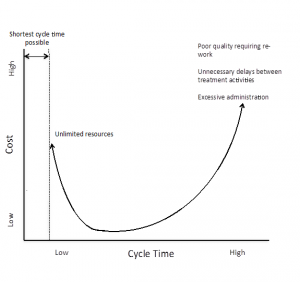Improving the quality of data collected by community health workers in rural Malawi
Dr. Junior Bazile and Henry Makungwa
Dr. Junior Bazile is a Haitian physician who received a medical degree in Haiti and obtained a master’s degree in public health from the University of Alabama at Birmingham under a Fulbright Scholarship. After several years working in Haiti and in Burundi, he is now working with Partners In Health in Malawi as the clinical director and community health director.
Henry Peter Makungwa is Malawian, and is currently the manager of the Village Health Worker program, overseeing all activities related to the household chart. He has been extensively trained in agriculture extension and holds a certificate in that field. After many years working with NGOs in the field, he joined PIH/APZU in 2008 and is one of the pioneers of the household chart program in Malawi.
In 2007, Abwenzi Pa Za Umoyo (APZU), the sister organization of Partners In Health (PIH) in Malawi, began a community health worker program to support HIV care in the remote, rural district of Neno. The program was designed to complement and be integrated with a Ministry of Health national HIV care program. The addition of community health workers allows HIV care and treatment to reach Malawians living in remote areas where geography makes it exceedingly difficult for them to access care.
In this setting, community health workers provide a critical link between the community and the local health facility. They visit patients between medical appointments, ensuring medications are taken as prescribed, answering questions, and monitoring for medical and social complications that might hinder a patient’s successful treatment. They also refer and accompany patients to a health facility when necessary.
During their regular visits, community health workers (CHW) collect data on a paper household chart, developed by PIH/APZU and the Ministry of Health. Data about all members of the community are collected on the chart, aggregated by site supervisors, and entered into a database. The resulting data give PIH/APZU a rich window into the lives of the people we serve. The information allows managers and supervisors to identify people suffering from inadequate housing, food shortages, a lack of potable water, or to find communities where a lack of information and cultural barriers are preventing pregnant women from attending antenatal appointments.
But these uses of the household chart are only possible with quality data. Challenges with the quality of CHW-collected data have been well documented in settings of poverty. In Neno, informal assessments had already indicated that household chart data were of poor quality, which prevented PIH/APZU from using the information. Since CHWs knew the data they were collecting were not being used or even analyzed, they tended not to pay attention to securing complete and correct data. In addition, the staff responsible for aggregating household chart data saw the task as an unwelcome addition to their existing workloads, which led to inconsistent data quality checks and further reduced the usability of the data.
In order to assess the quality of household chart data, PIH partnered with researchers at Harvard’s Department of Global Health and Social Medicine to apply Lot Quality Assurance Sampling (LQAS). LQAS is a classification technique originally used in manufacturing to evaluate the quality of, for example, a batch (or ‘lot’) of T-shirts that a factory produces. LQAS allows the manufacturer to take a sample of T-shirts and determine if the quality of the lot is acceptable. PIH uses the same approach with household chart data—staff examine only a few household charts from a health center (the ‘lot’) and determine whether the summary data quality from dozens of CHWs is statistically good enough to produce reliable results.
In July 2011 we did a baseline LQAS assessment of data quality, using five ‘clusters’ each made up of several different health posts. The results were sobering. Four out of five clusters had poor CHW data quality. From those results, we knew intervention was needed, and which health posts needed it most. We also knew where data quality was acceptable, with one cluster acting as a positive example where we could identify what was working well and extract best practices.
Based on this initial assessment, we implemented several measures to improve data quality. Responsibility for data aggregation was given to the site supervisors at each health center, who were eager to help with the improvement effort. Other staff members were assigned the specific role of implementing quality improvement measures based on the results of the LQAS assessments, which would ensure that patients got the services they need.
The resulting improvement was overwhelming. Three months after the baseline assessment that showed 80% of clusters with poor quality, we had turned the proportion on its head. Now, 80% of clusters showed good data quality. And by March 2012, all five clusters showed good data quality. The data that were previously so fraught with quality issues could now be used to improve the quality services at PIH/APZU facilities.
By using LQAS to identify data quality issues, and then intervening to improve data quality, we made the household chart a usable, practical tool for monitoring and improving the health of our patients. By accurately measuring trends in the community and tailoring our services to meet the needs of the rural poor, PIH/APZU is better positioned to appropriately address the burden of disease. These services break our patients out of the cycle of poverty and disease that in some cases has plagued them for generations.
Learn more about PIH at www.PIH.org.










